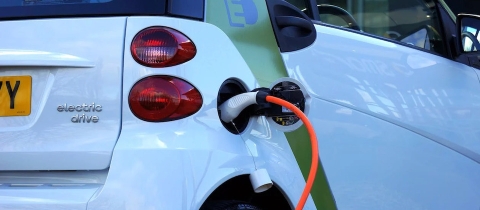Leonardo De Vinci was fascinated by flight and dreamed of various flying machines. He was realistic enough, though, to consider the risks and thought that brave men who strapped on wings should also strap on bags of air to protect them in case they should fall out of the sky like a rock.
But it was a different kind of rock that inspired the modern airbag. This rock was in the middle of the road and caused John Hetrick to swerve and end up in a ditch in 1951. He was thankful that his daughter, who was sitting beside him, was unhurt, but realized what could have happened had she slammed into the dashboard more forcefully. On the way home, Hetrick was already dreaming of sponges and cushions which could offer protection in the event of a crash. That’s when a memory from his days as a navy torpedo technician popped into his mind. Hetrick recalled how he had once been assigned to work on a torpedo in the maintenance shop. Torpedoes are propelled by compressed air, and for some reason, all of a sudden, the air was accidentally released. This was of no great consequence but one image had stuck in Hetrick’s mind. That of the tarpaulin, which had covered the torpedo, being catapulted instantly into the air!
Here was a possible solution to his cushion problem. How about a device that would fill some sort of a pillow with air in case of a collision? Soon Hetrick came up with a prototype and in 1952 was granted the first patent for what would become the predecessor to the airbag. The original idea of using compressed air turned out to be not workable because the air cylinder itself represented a risk. What if it was damaged in an accident and took off like a rocket? Furthermore, at the time, car manufacturers were more interested in enticing customers with huge engines and tail fins than airbags. But as the slaughter on highways continued unabated, carmakers realized that something had to be done. They began to install seat belts, but most drivers didn’t use them. Air bags began to be seriously considered but how could they be inflated safely within a few milliseconds of impact without using compressed gases?
The answer would be found in a fascinating chemical called sodium azide, NaN3. When this substance is ignited by a spark it releases nitrogen gas which can instantly inflate an airbag. The problem, however, is that the reaction also forms sodium metal which reacts with moisture to generate sodium hydroxide, a highly corrosive substance. A burst airbag could wreak havoc. Chemical ingenuity, however, came to the fore. If potassium nitrate and silicon dioxide were also included with the sodium azide, the only products that would form in addition to nitrogen would be potassium silicate and sodium silicate. Both of these are inert, harmless substances.
An airbag is designed to release some of the gas just after it deploys to help cushion the impact against the body. Hitting a fully inflated, unyielding airbag could be catastrophic. So before widely promoting this protective device, the safety of the contents had to be ascertained. In the 1970s Mercedes settled this issue by putting a cage full of canaries in a car and deploying an airbag. Canaries are extremely sensitive to minute traces of toxic gases but the birds survived the experiment with no casualties. By the late 1980s airbags had become a common feature in automobiles and have since saved thousands of lives.
But, like with any other scientific advance, there is a “but.” Airbags are not problem-free. While the chemistry involved in curbing sodium hydroxide production is clever, it is not foolproof. Small amounts of the caustic material have been released from deployed airbags, in rare cases causing severe eye injuries, including blindness. The most serious concern, however, is damage that can be done by an airbag as it rockets out at an astounding speed of up to 330 km per hour. A blow to the head by the rapidly inflating bag can be lethal. Unfortunately, over a hundred people, mostly children and small adults, have been killed in this fashion, ironically sometimes in low speed collisions when lives were not at risk. There is a great deal of research underway to find ways to ensure that airbags are only deployed when necessary and that they are deployed in the safest way. This includes various sensors that can gauge the weight of the passengers to allow a computer to calculate how and if an airbag should be inflated. In any case, children must not be allowed to sit in the front seat of an airbag equipped car! Some researchers even argue that better protection can be had by stronger promotion of seat belts than by emphasizing airbags.
There is a further problem that needs to be addressed. Sodium azide is more toxic than cyanide. What will eventually happen to all the azide in cars headed for the junkheap? What if the canisters are not removed? If sodium azide is released it can react with water to form hydrazoic acid which is not only toxic but is highly explosive. Sodium azide can also react with metals such as copper or lead form explosive copper or lead azides. Just ask the plumbers who were called to a lab where sodium azide solutions had been used. When they took out a piece of copper pipe and tossed it into the garbage it exploded. An unfortunate and shocking way to learn about the chemistry of azides!
Want to comment on this article? Visit our FB Page!







